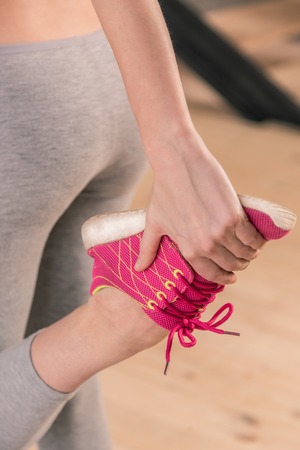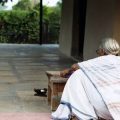Understanding Heart Attack Recovery for Women in India
Heart attacks are increasingly becoming a significant health concern among Indian women, especially with changing lifestyles and urbanisation. Traditionally, heart disease was considered a male-centric issue, but recent studies show a rising prevalence among Indian women, both in rural and urban areas. Unique socio-cultural factors play an important role in how women experience and recover from heart attacks in India. For instance, Indian women often prioritise family care over their own health, may delay seeking medical help due to social expectations, and sometimes lack awareness about cardiac symptoms that differ from men’s.
In addition, dietary habits, physical inactivity, and the increased incidence of diabetes and hypertension contribute to the risk profile for Indian women. Post-heart attack recovery requires special attention to cultural norms—such as household responsibilities, traditional dietary patterns, and support systems—that influence rehabilitation. Understanding these unique challenges is crucial for designing effective exercise and recovery strategies tailored specifically to Indian women after a heart attack.
Importance of Exercise in Your Recovery Journey
After a heart attack, regular physical activity is one of the most important steps for women’s recovery, especially in India where cultural habits and daily routines can influence health outcomes. Exercise helps improve heart strength, manage weight, control blood sugar, reduce stress, and prevent future cardiac events. For Indian women, who often balance family responsibilities and work, integrating exercise into daily life can be challenging but extremely rewarding.
Benefits of Physical Activity After a Heart Attack
| Benefit | Description | Indian Context Example |
|---|---|---|
| Improved Heart Function | Strengthens the heart muscle and improves circulation. | Brisk walking in the morning at a nearby park or temple ground. |
| Weight Management | Helps maintain healthy body weight, lowering cardiac risk. | Replacing evening tea-time snacks with a 15-minute light exercise session. |
| Stress Reduction | Lowers anxiety and depression through endorphin release. | Practicing yoga or pranayama (breathing exercises) at home. |
| Diabetes Control | Aids in maintaining stable blood sugar levels. | Dancing to Bollywood music as a fun form of aerobic exercise. |
| Better Sleep Quality | Promotes deeper and more restful sleep at night. | Gentle stretching or guided meditation before bedtime. |
How Indian Women Can Safely Incorporate Exercise Into Daily Routines
- Start Slow: Begin with low-impact activities such as walking, light yoga, or traditional floor exercises like sukshma vyayam.
- Cultural Adaptation: Include household chores like sweeping (jhadu-pocha) or gardening as part of your physical activity. These are familiar tasks that also contribute to fitness.
- Create a Support System: Involve family members or join local women’s groups for group walks or community yoga sessions, making exercise more enjoyable and sustainable.
- Consult Your Doctor: Always check with your cardiologist before starting any new exercise routine. Follow their guidance on intensity and duration based on your individual health status.
- Pace Yourself: Listen to your body. If you feel breathless or fatigued, take rest and avoid overexertion. Safety comes first during recovery.
- Add Variety: Combine different forms of exercise such as walking, gentle stretching, and traditional dance forms like Garba or Bharatanatyam to keep motivation high and engage different muscle groups.
Key Takeaway for Indian Women Recovering from Heart Attack
The journey towards recovery is unique for every woman. By understanding the benefits of physical activity and adapting safe exercise practices to suit Indian lifestyles, you can strengthen your heart and improve overall well-being while honouring your cultural traditions and daily commitments.

3. Safe Exercises for the Indian Woman’s Lifestyle
After a heart attack, it is important for Indian women to choose exercises that are both safe and suitable for their daily lives. Understanding the cultural context, traditional attire like sarees or salwar kameez, and typical home environments can help make physical activity more accessible and sustainable.
Yoga: Traditional and Heart-Friendly
Yoga is deeply rooted in Indian culture and offers gentle yet effective movements for post-heart attack recovery. Poses such as Tadasana (Mountain Pose), Bhujangasana (Cobra Pose), and Shavasana (Corpse Pose) promote flexibility, relaxation, and improved blood circulation. Breathing exercises like Pranayama can also reduce stress and support heart health. Always practice under guidance initially and avoid strenuous poses.
Walking: Simple & Adaptable
Walking is a universally safe exercise that fits easily into the Indian lifestyle. Whether it’s brisk walking inside your home, around your building, or at a nearby park, this activity supports cardiovascular recovery without requiring special equipment or clothing changes. Aim for short sessions of 10-15 minutes, two to three times a day, gradually increasing as stamina improves.
Home-Based Activities: Making Use of Daily Chores
Many Indian women manage household responsibilities which can double up as low-impact physical activities. Tasks such as sweeping, mopping, folding clothes, or gentle gardening are not only culturally relevant but also provide light exercise to keep the body moving safely after a heart event. Remember to pace yourself and take breaks when needed.
Low-Impact Movements for All Ages
If you prefer structured exercise but want to stay indoors due to climate or family commitments, consider simple chair-based movements or step-ups on sturdy platforms. Gentle stretching routines can be done while wearing traditional attire and do not require much space. Avoid high-intensity workouts until cleared by your cardiologist.
Tips for Staying Consistent
Choose activities you enjoy and fit them into your daily schedule—perhaps right after morning prayers or before evening tea. Invite family members to join in for motivation and safety. Most importantly, always listen to your body and consult your doctor before beginning any new routine.
4. Building a Support System: Family and Community Involvement
After a heart attack, Indian women often face unique cultural and social challenges on their road to recovery. The encouragement and practical help from family and community are crucial in maintaining an exercise routine. In Indian society, where family bonds are strong and community networks are vibrant, leveraging these resources can significantly enhance motivation and adherence to post-heart attack exercise programmes.
How Family Can Help in Exercise Adherence
Family members play a central role in an Indian woman’s recovery journey. Their active participation not only provides emotional support but also helps create a safe and encouraging environment for regular physical activity. Here are some effective ways families can get involved:
| Family Support Method | Practical Example |
|---|---|
| Participating Together | Go for morning walks as a family or join in light yoga sessions at home |
| Motivational Reminders | Encourage gentle reminders for daily exercise without being forceful |
| Celebrating Progress | Acknowledge milestones like completing a week of exercises with a healthy treat or kind words |
| Assisting with Routine | Help set up a comfortable space at home for exercise; arrange music or prayer chants for relaxation during workouts |
| Cultural Sensitivity | Respect traditional beliefs by incorporating culturally familiar activities such as folk dance or stretching routines used during festivals |
The Role of Local Community Groups and Neighbours
Community engagement is vital in India’s collectivist culture. Local women’s groups, religious associations, and neighbourhood wellness clubs can offer both companionship and accountability. Participating in group activities not only makes exercise enjoyable but also reduces feelings of isolation.
Tips for Getting the Community Involved
- Join Local Wellness Programmes: Many temples, gurdwaras, and resident welfare associations organise group walks or yoga classes that are friendly to all ages.
- Create an Exercise Buddy System: Pair up with another woman in your area recovering from similar health issues; motivate each other and share progress.
- Organise Health Awareness Events: Work with local NGOs or health centres to host workshops on heart health, emphasising safe exercise after cardiac events.
- Leverage Social Media Groups: Use WhatsApp or Facebook groups specific to your locality to share motivational stories, tips, and reminders about regular activity.
Encouraging Loved Ones to Participate: Simple Strategies
- Involve children or grandchildren by letting them demonstrate simple stretches or participate in laughter yoga sessions together.
- Ask spouses or siblings to accompany you for evening strolls, making it a daily family ritual after dinner.
- If elders are hesitant, introduce them gradually to new exercises using traditional Indian music or devotional songs they enjoy.
- Praise small achievements openly during family gatherings to build confidence and reinforce positive behaviour.
A strong support system rooted in Indian familial values and community spirit can transform the experience of post-heart attack recovery. When loved ones actively participate, women feel empowered, less anxious, and more likely to stick to their prescribed exercise regimen—ensuring safer and sustainable cardiac rehabilitation.
5. Recognising Red Flags: When to Pause or Seek Help
After a heart attack, it is vital for women to understand that not all discomfort during exercise is normal. Knowing the warning signs and acting promptly can save lives. Indian women often tend to ignore mild symptoms or attribute them to tiredness, but recognising when to stop and seek medical assistance is crucial for safe recovery.
Common Warning Signs to Watch For
- Chest pain or tightness: Any chest discomfort, heaviness, or pain—even if it seems mild—should never be ignored. This could indicate your heart is under stress.
- Shortness of breath: While mild breathlessness can be normal during activity, excessive or sudden difficulty in breathing, especially at rest, should be taken seriously.
- Dizziness or fainting: Feeling lightheaded, dizzy, or actually fainting during exercise is a red flag and must not be overlooked.
- Unusual sweating: Profuse sweating without much exertion, especially if cold and clammy, may signal cardiac distress.
- Pain in other areas: Pain spreading to the arms, back, neck, jaw, or stomach (which is common among Indian women), should prompt immediate action.
When Should You Stop Exercising?
If you experience any of the above symptoms while exercising, pause immediately. Sit down in a safe place and monitor your condition. In Indian households where family support is strong, inform someone nearby about how you are feeling. Avoid pushing through pain or discomfort; listen to your body’s signals.
Consult Your Doctor or Local Healthcare Provider
If symptoms persist even after rest, or if you feel unwell in any way that concerns you, consult your doctor or visit your nearest healthcare centre. Many cities and towns across India have dedicated cardiac care clinics—do not hesitate to use these resources. Early intervention can prevent complications and ensure a smoother recovery.
Cultural Note for Indian Women
In India, women often prioritise family responsibilities over personal health. Remember: caring for yourself enables you to care for others better. Do not consider seeking help as a sign of weakness; it is an essential step towards complete recovery after a heart attack.
6. Integrating Diet and Holistic Wellness in Indian Context
Adapting Indian Diet for Heart Recovery
Nutrition plays a vital role in the recovery process after a heart attack, especially for women. Embrace a balanced Indian diet that focuses on whole grains like brown rice, millets (ragi, jowar, bajra), and whole wheat chapatis. Include plenty of seasonal vegetables such as lauki (bottle gourd), tori (ridge gourd), spinach, and carrots, as well as fresh fruits like papaya, guava, and apples. Opt for healthy protein sources common in Indian kitchens, such as dal (lentils), moong sprouts, paneer (in moderation), and fish if non-vegetarian. Limit usage of ghee, butter, and coconut oil; instead, choose oils like mustard or groundnut oil in small quantities. Reduce salt intake by using natural herbs and spices like jeera (cumin), dhania (coriander), turmeric, ginger, garlic, and lemon to enhance taste without overloading sodium.
Rest Practices Rooted in Indian Lifestyle
Proper rest is crucial after a heart attack to allow the body to heal. Women often manage multiple roles at home; hence, prioritize short naps during the day and consistent sleep patterns at night. Traditional practices such as afternoon siesta (vishraam) can support energy levels without causing lethargy. Avoid strenuous household chores initially—delegate tasks when possible and ask family members for support.
Indian Stress Management Techniques
Stress management is essential for safe cardiac rehabilitation. India offers several holistic approaches: practice daily pranayama (breathing exercises) such as Anulom Vilom or Bhramari to calm the mind and improve oxygenation. Gentle meditation or chanting mantras like “Om” can reduce anxiety and foster emotional stability. Incorporate mild yoga stretches recommended by your doctor; avoid intense poses until cleared by your cardiologist.
Cultural Support Systems
Leverage the strong family and community ties typical in Indian society for emotional support during recovery. Participating in group prayers, bhajans, or satsang can provide comfort and motivation while promoting positive mental health.
Key Takeaway
A heart-healthy lifestyle for Indian women after a heart attack blends traditional dietary habits with mindful rest and indigenous stress-relief practices. Combining these with a tailored exercise program ensures holistic recovery and long-term wellness.

